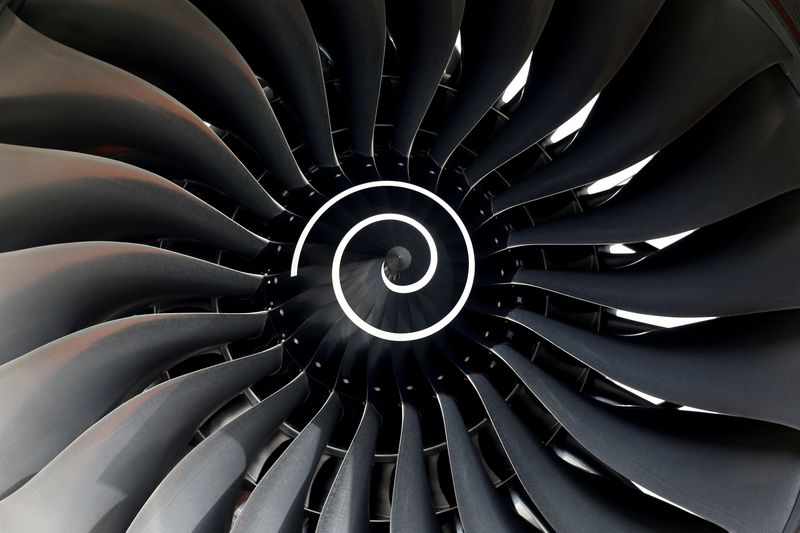By Paul Sandle
LONDON (Reuters) -Aero-engineer Rolls-Royce (OTC:RYCEY) disappointed investors by reporting a bigger-than-expected fall in first-half profit on Thursday, underscoring the challenge facing its new chief executive of restoring the health of its civil aviation business.
Shares in Rolls-Royce fell 7.5% after the British company, whose engines power the Airbus A350 and Boeing (NYSE:BA) 787, reported its underlying operating profit fell to 125 million pounds ($152 million) from 307 million pounds a year earlier, missing consensus by 24%.
Its civil aviation business reported an underlying operating loss of 79 million pounds ($96 million) despite a 43% increase in flying hours, a key driver of revenue.
Chief Executive Warren East, who will be succeeded by ex-BP executive Tufan Erginbilgic at the end of the year, pointed to an improvement in free cash flow of 1.1 billion pounds and strong order intake in its power systems business.
He said cash flow was still expected to be "modestly" positive for the whole year, after a cash burn of 68 million pounds in the first half.
That compares to cash burn of 1.5 billion pounds in 2021, and 4.2 billion pounds in 2020 when the pandemic grounded jets worldwide.
East said the company was facing headwinds from higher inflation and supply-chain disruption, such as chip shortages and finding alternative suppliers of titanium.
"We are actively managing the impacts of a number of challenges, including rising inflation and ongoing supply chain disruption, with a sharper focus on pricing, productivity and costs," he said.
The company's shares were briefly boosted on Wednesday when it received final clearance for the sale of ITP Aero.
Analysts at J.P. Morgan Cazenove questioned how Rolls-Royce expected to generate free cashflow when its profit was so low.

They said the answer was that the vast majority of cash flow in the next four years would likely come from pre-payments on long-term serviced agreement and not accrue to shareholders.
($1 = 0.8218 pounds)